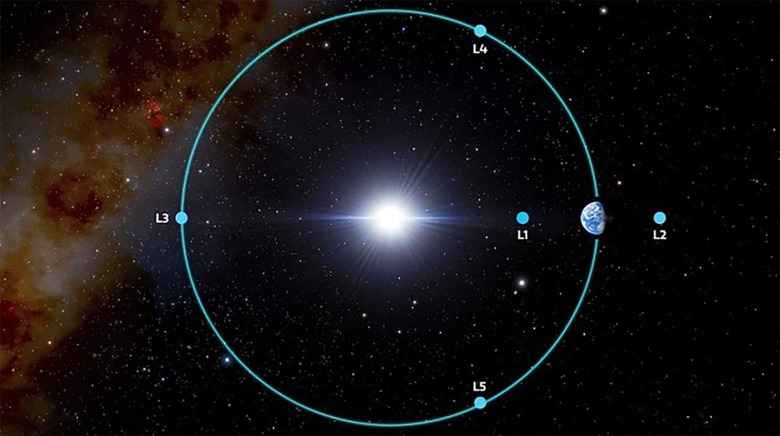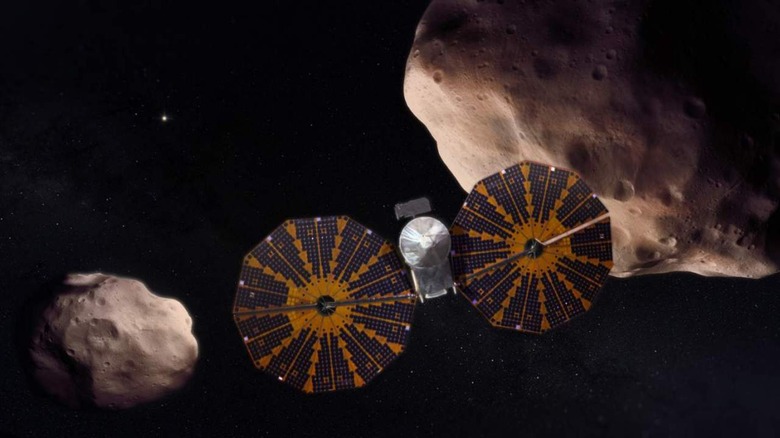A New Earth Trojan Asteroid Was Spotted - That's A Huge Opportunity
Astronomers have discovered a new Trojan asteroid that follows the same path around the Sun as Earth. Dubbed 2020 XL5, the newly discovered Trojan is the second such asteroid that has been discovered, with both discoveries occurring over the past ten years. The asteroid is shadowing Earth and as it is in the same general orbit, there is no danger of it colliding with the planet.
The name "Trojan asteroid" comes from the Jupiter Trojans, a series of asteroids that followed the planet Jupiter in its orbit around the Sun. The name was given to the family of asteroids after several has been given names from Trojan heroes that appeared in The Iliad.
Trojan asteroids are able to hold their position in relation to much larger bodies like planets because they are located at respective Lagrange points. As The New York Times writes, "When two objects orbit each other, there are five points, known as Lagrange points, where the gravity of the two essentially balance, and a much smaller mass can sit there in equilibrium. Two of the five Lagrange points, known as L4 and L5, are stable: If a small body there is nudged slightly, it remains at that point. At the three unstable Lagrange points — L1 through L3 — a nudge will push the small body away for good."
Earth Trojan asteroids are very hard to find
Asteroid 2020 XL5 appeared around Earth's Lagrange point L4 in the Earth-Sun system. Scientists estimate that the Trojan asteroid arrived in its current location in the last few centuries and should hold its position for around another 4,000 years before it is eventually tugged out of its current orbit by Venus. If you've been following the James Webb Space Telescope mission, you will be aware that it is now positioned in Earth's Lagrange point 2 (L2). While still a position of gravitational equilibrium between the Sun and Earth, L2 is actually slightly less stable than where asteroid 2020 XL5 is located, although the Webb has the benefit of thrusters to keep it in the correct position.
Asteroid 2020 XL5 is around three quarters of a mile across making it larger than the first Trojan asteroid found in Earth's orbit, Trojan asteroid 2010 TK7, which is about a quarter of a mile across. Earth Trojan asteroids are difficult to spot because of the angle from which they can be observed. They are only observable when close to the Sun and just above the horizon, creating a situation where visibility is low and potential observation time is just a few minutes long. The team overcame this problem by identifying 4-meter class telescopes that would be best positioned to make these observations. These were the 4.3 m Lowell Discovery Telescope (Arizona, USA) and the 4.1 m SOAR Telescope, operated by NSF's NOIRLab (Cerro Pachón, Chile).
Trojan asteroids could be a treasure trove
The scientific possibilities offered by the discovery of Trojan asteroids are intriguing. They are thought to be remnants of the early formation of the solar system and, in this case, could even offer an insight into how Earth was formed.
This newly discovered 2020 XL5 asteroid is dark in color and thought to be carbon-rich and has the potential to be a pristine time capsule worth examining more closely. Because 2020 XL5 is located at the L4 point, it makes sending a spacecraft to examine it quite feasible. It would be a relatively low cost mission as the energy required to reach it and then stay with it in orbit is quite low. Lead researcher of the team that discovered 2020 XL5, Toni Santana-Ros of the University of Alicante even suggests that "Earth Trojans might become ideal bases for an advanced exploration of the Solar System, or they could even become a source of resources."


